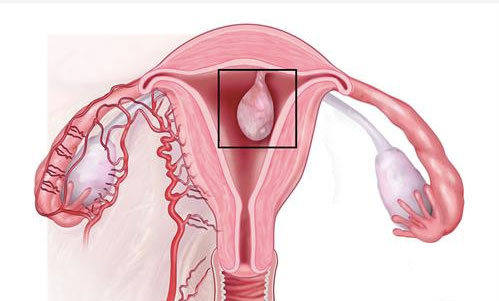Uterine polyps (endometrial polyps): Uterine polyps are abnormal tissues that develop from the lining of the uterus. These tissues are attached to the uterine lining, sometimes with a thin stalk and sometimes with a thick stalk. These abnormally enlarged tissues are usually not cancerous. However, they can cause problems in patients, such as bleeding between periods or infertility.
Polyps can vary in size. They can grow from a few millimeters to almost the size of a tennis ball.

Sometimes it is a single polyp, sometimes there are several. Usually they remain in the uterus, very rarely they can fall out of the uterus. They are usually seen between the ages of 40 and 50, but they are not expected under the age of 20.
Symptoms
- Irregular bleeding, heavy bleeding
- Bleeding between periods
- Postmenopausal bleeding
- Infertility
Some women have light spotting, others have no symptoms at all.
When should I see a doctor?
- if vaginal bleeding occurs after menopause
- in case of intermittent bleeding (outside menstruation)
- if menstrual irregularities occur,
you should see a gynecologist.
What are the causes of uterine polyps?
Hormonal factors play a role, but the exact cause is unknown.
What are the risk factors?
- Being over 40 years old
- High blood pressure
- Being overweight
- Taking the drug Tamoxifen
What are the complications?
Uterine polyps can cause infertility. If you have polyps and are unable to have children, removing them may help you get pregnant.
How is it diagnosed?
If your doctor suspects a polyp, he or she may do one of the following.
- Transvaginal ultrasound: sometimes polyps can be seen very clearly on ultrasound. The thickening of the lining of the uterus may be clearly visible. Sometimes, if your doctor is not sure, he/she may do saline infusion sonography. Saline infusion sonography is very good at diagnosing polyps. In this procedure, a small amount of saline solution is injected into the uterus. An ultrasound examination is then performed. You may experience very mild cramping pain during this procedure.
- Hysteroscopy: a thin, lighted telescope is inserted into your uterus, and all the walls of the uterus can be easily examined.
Taking of a piece of uterine tissue (endometrial biopsy): Although very rare, biopsy and curettage techniques are used to diagnose and treat polyps. However, this method was used before hysteroscopy. - Most uterine polyps are benign. However, some precancerous lesions in the uterus may look like polyps. Your doctor will most likely take a sample of the polyp and send it to pathology for analysis. This will help determine if it is cancer.
How are uterine polyps treated?
Polyps do not need to be treated if they do not cause discomfort. However, they should be removed if they cause problems, such as bleeding problems, menstrual irregularities, infertility, or if they pose a risk of cancer. Removal of polyps larger than 1 cm, multiple polyps or polyps in menopausal patients.
- Waiting and observation: some polyps disappear on their own over time. Treatment is usually not necessary for small polyps that do not cause discomfort. We follow up on these cases.
- Medication: we can suppress and reduce polyps and the discomfort they cause, especially with some progesterone hormone preparations or GnRH agonists. However, polyps may grow again in these patients when we stop the medications.
- Surgical removal of polyps: Polyps can be surgically removed by penetrating the uterus with a device called a hysteroscope. They are then sent for pathological examination. If cancerous tissue is found in the polyps, treatment will be changed. You should discuss this in detail with your doctor.
However, in rare cases, the polyps may recur.
Can the formation of polyps be prevented?
There is no way to prevent the formation of uterine polyps. Regular check-ups with a gynecologist are always important. In particular, patients with obesity, high blood pressure and patients taking tamoxifen should be monitored more closely.





